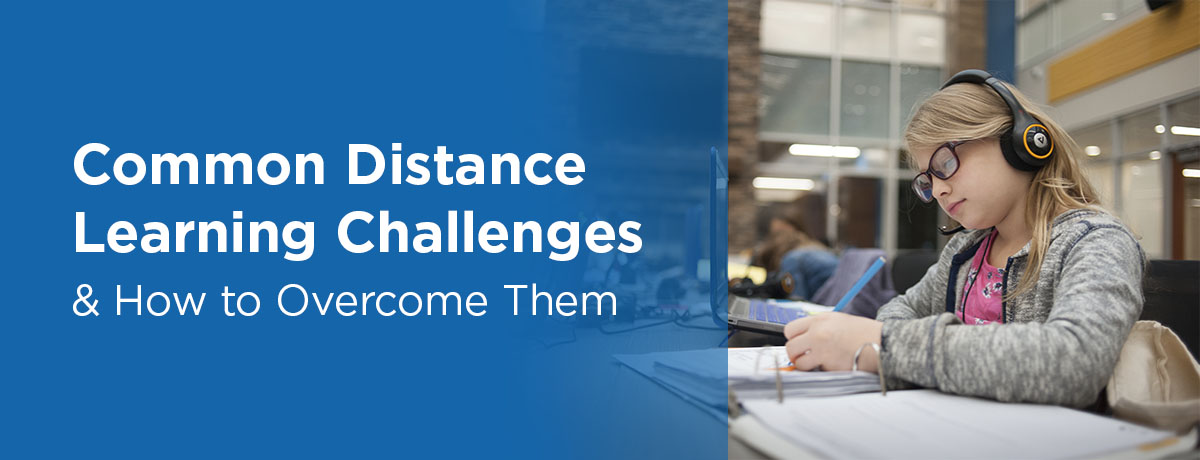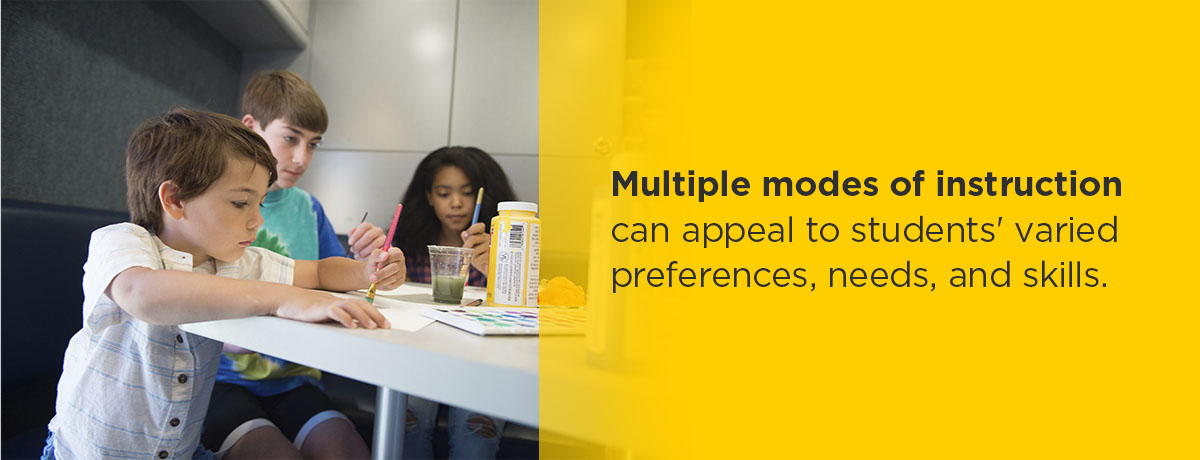2025-2026 School Year Enrollment Now Open. Click Here
2025-2026 School Year Enrollment Now Open. Click Here

In 2020, 93% of households with school-aged children reported using some form of distance learning during the school year. With this sizable shift from in-person education to remote learning, students are increasingly experiencing the challenges of distance learning.
Though there are many advantages of online schooling, some students who are new to the remote experience may initially struggle to transition into it. If your child is among these learners, you can implement many solutions to distance education challenges to make the process smoother and more manageable.
Millions of children do not have reliable internet access in their homes, making it arduous to impossible to take classes online. Lack of broadband internet access can significantly impact even the brightest student’s academic performance, creating outages and connectivity issues that prevent them from completing assignments, connecting with teachers, collaborating with classmates, and seeking schoolwork help.
Spotty internet access can also impact parents and guardians, making it challenging for them to receive teacher emails, use school website resources, and access online grade books.
If your child doesn’t have dependable internet access at home, you can use numerous resources to make distance education possible for them.

Often, different instructional types lend themselves better to various lessons. Science class can be more engaging and practical with a hands-on experiment. Group projects can help students brainstorm ideas and hypothesize. Something as simple as viewing a diagram can help students connect the dots in new ways. Plus, multiple modes of instruction can appeal to students’ varied preferences, needs, and skills.
Here are some areas in which teachers might incorporate different preferences or instructional approaches.
Because distance learning can have more limitations than in-person schooling, it doesn’t always offer assignments and activities that use these instructional strategies. Online education often involves textual readings, online lectures, and the occasional video, but doesn’t always expand far beyond that realm. This can pose problems for offering flexibility and presenting content in the most effective instructional format.
Even if your child’s online courses don’t support their learning preferences, you can take measures to make their experience easier and more engaging. As a parent, you can help by acting as a learning coach. By showing students how to adapt content to their needs and abilities, you’re also teaching them valuable skills they’re sure to appreciate later when dealing with hands-off professors or challenging work environments.
For example, if your student likes to work with visuals, you might help them create flashcards or diagrams to maximize their learning skills. To deepen understanding, you could create a dialogue with them about course material, and so on.
In-person schooling provides children with an organized learning environment designed to keep them on task throughout the day. However, online learning can lack the same sense of structure in-person education does, making it challenging for students to manage their time and hold themselves accountable when balancing classes and assignments.
As a parent, you can create schedules for your student to adhere to during the school day to give them a solid plan and a more organized learning structure. These schedules can include class times, lunch and rest breaks, study periods, and time to work on assignments. Other time managers include the following.
One of the most significant challenges of online distance learning is managing distractions, especially for younger children who find it more difficult to sit still for extended periods. While in-person classes have teachers present to keep students focused and on task, online learning doesn’t offer the same luxury.
Some students aren’t necessarily prone to distractions but may work in an external environment with various disturbances — such as blaring televisions, fussy siblings, and visual clutter — that can also deflect focus.
Luckily, this common distance learning challenge has many viable solutions to help your child eliminate distractions from their environment.
Text-based communication like chat tools, email, and text messages is typically the primary communication method for distance learners, which can create challenges for students who prefer verbal communication. Composing these messages may be frustratingly time-consuming for some students, while others may prefer a more immediate, in-person response.
If text isn’t the best communication channel for your child, you can help them adjust to distance learning by using other forms of communication to connect with teachers and students, such as:
Your child can experience an enriching and flexible online learning environment with Commonwealth Charter Academy. At CCA, we think about education differently, allowing distance learners to create a personalized curriculum, embark on social and educational trips, access non-academic resources, and ultimately become active participants in their education. Our goal is for our graduates to become the leaders of tomorrow and contribute to a better society.
Request more information to learn why CCA is the perfect fit for your family today!
2025-2026 School Year Enrollment Now Open. Click Here